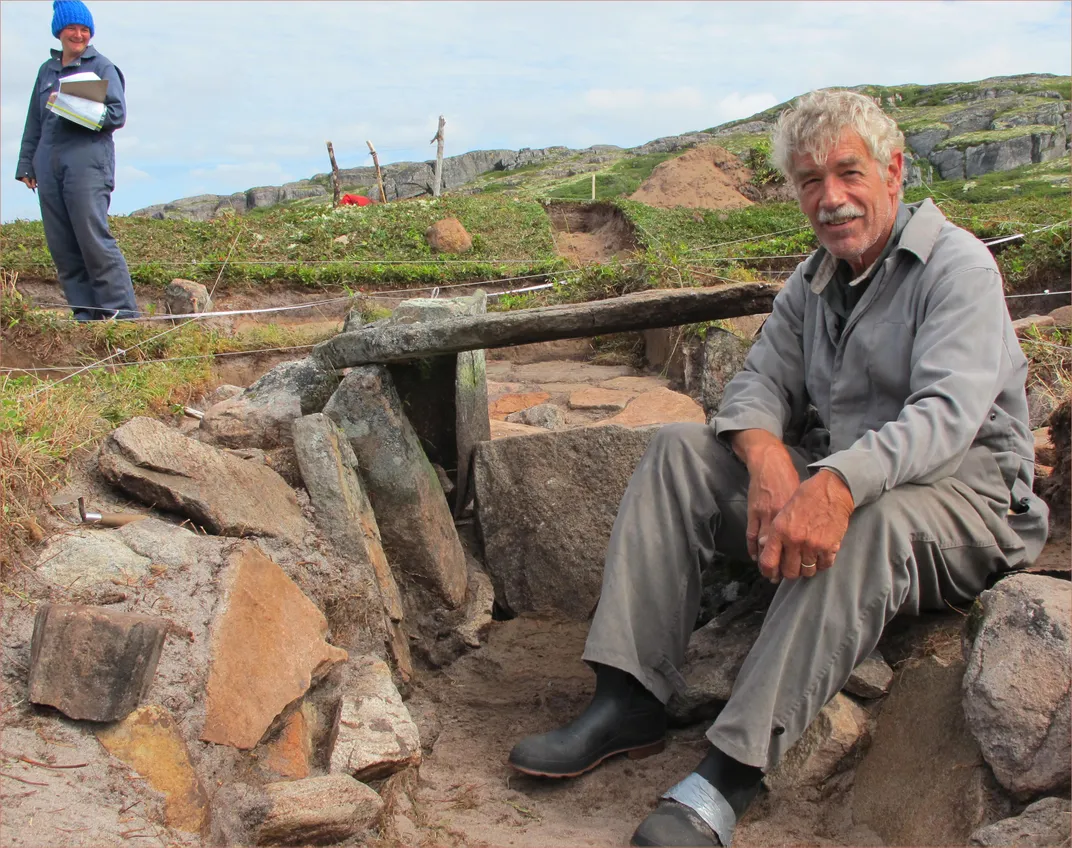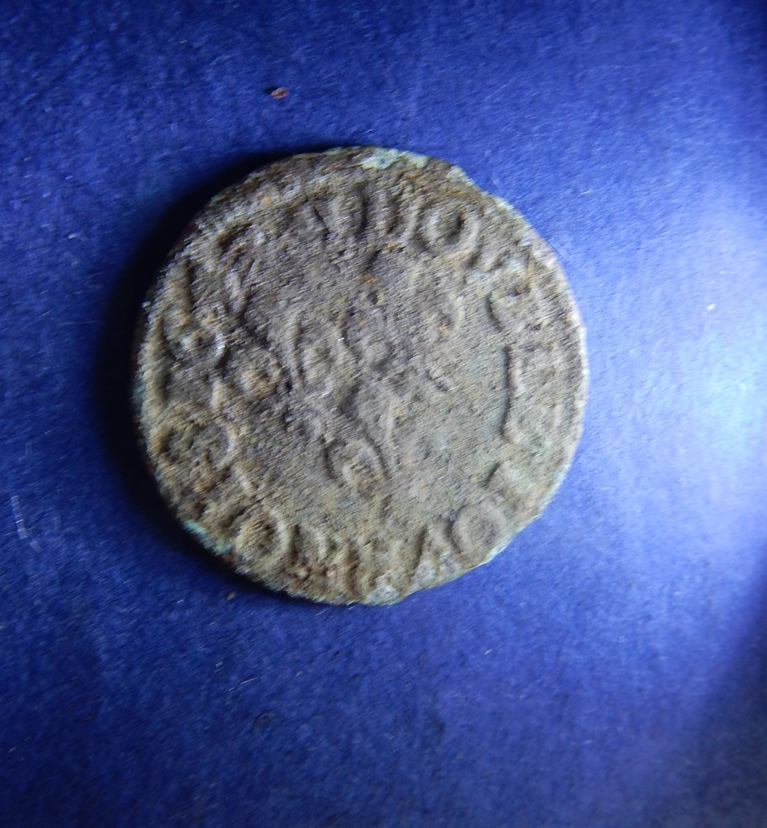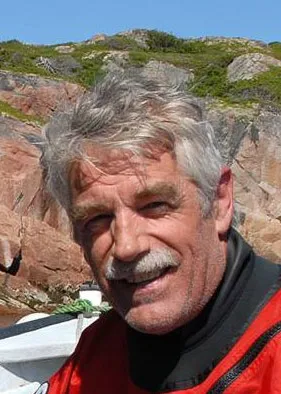NATIONAL MUSEUM OF NATURAL HISTORY
Some Archaeological Dating can be as Simple as Flipping a Coin
The appearance of European artifacts in the arctic helps archaeologists date Inuit sites.
:focal(374x112:375x113)/https://tf-cmsv2-smithsonianmag-media.s3.amazonaws.com/blogging/featured/Double_Tournoise_1638_3.jpg)
“A coin? You found a coin in your square? Why didn’t you tell me?!” I asked Allie.
Alexandra Castellanos, Halie Adams, and Jake Marchman had been excavating at the Hart Chalet site for a few days in early August while I was in Washington, D.C. opening the new exhibition, Narwhal: Revealing an Arctic Legend at the Smithsonian’s National Museum of Natural History. Narwhals are neat animals. They live farther north than any mammal on earth and they have that mysterious tusk that inspired the medieval story of the unicorn.
But, while I was in Washington, I really wanted to be back in coveralls and mud boots digging up a four hundred year old Eskimo site in subarctic Quebec.

“It’s just a coin,” Allie said. “No big deal. We found a lot more interesting stuff while you were away in D.C.”
“Like what?” I asked.
“Well, we showed you the whalebone knife with an iron blade and that cool bear tooth with two holes drilled through it—like it was a charm to string around your neck. Maybe it protected an Inuit hunter from polar bears, or drowning in a storm, or something.” Allied replied.
“Yeah. Those things are pretty neat and they show how the early Labrador Inuit used local products like whalebone together with iron knife blades obtained by trading with Basque fishermen from the Bay of Biscay in Europe. And the tooth—it looks like a black bear tooth, not polar bear—probably wasn’t a charm. It looks to me like a toggle handle—something used as a handle to drag a seal you’ve caught across the ice to camp. I’ve seen lots of drag handles like it from other Inuit sites in Arctic Alaska and Canada.”
“So, what’s so neat about the coin?” Allie asked. “I found it in my excavation pit mixed in with lots of caribou bones—they were all broken up, so I think they were cooked to get the marrow and grease out, probably to make soup. It was right next to the hearth outside the door of the old Inuit sod house. They obviously didn’t care much about it if they threw it out with all that trash."

“Well, I guess you didn’t take that Archaeology 101 course at Notre Dame, did you?” I joked. “If you had—or if you’d been in my class at Dartmouth—you’d have learned how important coins are to an archaeologist. Even if they’re not worth much back when they were made, they can be invaluable to someone trying to reconstruct history.”
For forty years, I have been studying the migration of Inuit people (the proper name for the people we used to call “Eskimos”) from the Canadian Arctic into Labrador and the northern Gulf of St. Lawrence. I’ve dug up thousands of artifacts and written many papers about Inuit history and archaeology. I’ve always had to date these movements by the types and styles of artifacts found in their old dwelling sites.
Harpoon heads are good because their shapes change over time. Pottery and clay tobacco pipes can be great time-markers too because they change like fashion-designers’ clothes. We also use radiocarbon dates—a chemical method based on the decay of radioactive Carbon-14 to Carbon-12. These dates always have a built-in error of plus or minus 40 years—so you can be 80 years off right from the start. And by AD 1600 you don’t get accurate results anyway; not enough C-14 has decayed to C-12 to give a statistically accurate age.
Then, I gave Allie a bit of history. “When the Inuit, migrating south, reached central Labrador around 1550, they met European fishermen and whalers—many of them Basque whalers from northern Spain. For a couple hundred years the Inuit traded walrus ivory, whale baleen, eider duck down, and seal and walrus hides with Europeans to obtain boats, iron tools, cloth, tobacco, and ceramics. The Inuit carried these products back north to their settlements along the icy coasts where Europeans ships could not travel.”
“The appearance of European artifacts in the arctic helps archaeologists in many ways,” I continued. “We learn how Inuit adapted to European culture and technology—replacing their stone tools with iron, their soapstone pots with copper, their ivory beads with more colorful glass beads, their skin boats with wooden whaleboats, and many other things. The introduction of European artifacts and technologies also helps us date Inuit sites: clay pipes and glass beads appear only after 1600; Spanish faience earthenware pottery is more present in the 1500s. But, none of these materials is as good as a coin with the name of a king and a date stamped into the metal.”
We were lucky. Allie’s coin was not badly corroded. We could read a few of the letters by holding a tiny flashlight along the surface so that the raking light created shadow effects that revealed a few of the letters and what seemed like a 16-something date. But we couldn’t be sure. If we could identify it, we would have a certain date before which the Hart Chalet Inuit site could not have been occupied. Archaeologists call this a terminus post quem date. Meaning, the earliest possible date for something to happen. Our boat captain, Perry Colbourne, used a small flashlight and a Nikon cool-pix camera to get shots of both sides of the coin which we sent off to the Smithsonian’s National Museum of Natural History to see if someone there could identify it.
Twenty minutes later, I got an email response from my student intern Margaret Litten. ”You maybe didn’t know, but I have a hobby. I am a pretty good numismatist [coin expert],” she wrote. “I looked at the photos you sent and I think I found what coin it is but I left a message with the Collections Manager [of the National Numismatic Collection] at American [Smithsonian’s National Museum of American History] for an official ID. I think it’s a double tournois copper coin minted for French King Louis XIII between 1632 and 1634. About 100,000 were minted and it’s worth about 32 British Pounds.”

Later, I had a confirmation from the Smithsonian’s Collections Manager of coins, Hillery York. Its inscription reads: “DOVBLE TOVRNOIS 1643.” The more abraded reverse reads: “LVD.XIIID.G.FRET.NAVRFEX."
“But, don’t we still have problems?” Allie asked. “Maybe it did not get to the site until many years later.”
“You’re right there, Allie,” I replied. “A Louis XIII double tournois coin does not solve all of our dating problems at the Hart Chalet site, but it does give us important information we cannot get from other types of artifacts like beads or ceramics because they don’t come with a precise date stamped on them. Also, because it’s not perforated, it was probably not worn as an ornament for many years by the Inuit who obtained it. Chances are that it got into the site within a decade or two after the 1630s because it was not a valuable coin in those days—not something a European would have treasured. And, as for the Inuit, it was just found in a trash heap!”
“Regardless, this little coin means a lot to us,” I continued. “As we try to piece together the Inuit and European history of the Quebec Lower North Shore, we know that Inuit were dealing with some French or French Basque people in the early 17th century as a result of this find. It’s the best date we have for the site and explains why we don’t have clay pipes, glass beads, and other European materials that we would have found if the site had been dated after 1700.”
“Okay. I get it,” Allie said. “Next time I find a coin, I’ll let you know. And, by the way, wouldn’t this make a good story for International Archaeology Day?”

